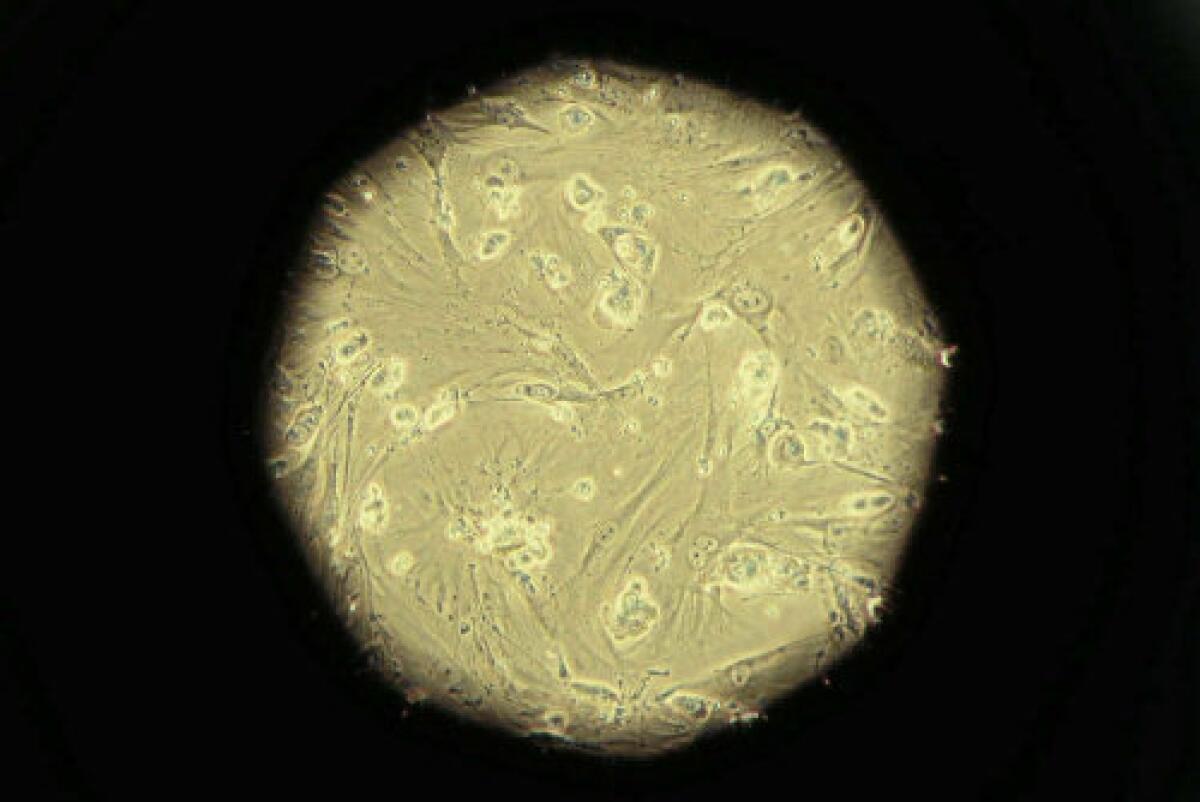Stem cell treatments for mitochondrial disease may be possible

Scientists have taken the first step toward using stem cells to treat patients with mitochondrial disease, a team reported Wednesday in the journal Nature. Pictured: embryonic stem cells under a microscope.
- Share via
Doctors have limited options for treating mitochondrial disease, but a team led by a prominent innovator may have taken an important step toward developing new therapies: rewinding diseased cells from patients to create pluripotent stem cells with healthy mitochondrial DNA.
Cells like these, which potentially could be reprogrammed to develop into a variety of different cell types, could someday be the basis for individualized transplant therapies that could counteract some of the severe impairments mitochondrial disease inflicts, including cardiac, vision and neurological woes.
“This is a first step toward regenerative medicine [for mitochondrial disease patients],” said Oregon Health and Science University stem cell researcher Shoukhrat Mitalipov, lead author of a study describing the new research that was published Wednesday in the journal Nature. “It’s far on the horizon, but we’re starting.”
Usually, when scientists talk about human DNA, they refer to nuclear DNA: the 46 chromosomes, inherited from both parents and located in the cell nucleus, that make up the genetic blueprint for each individual. But people also have another type of DNA called mitochondrial DNA, located inside the structures called mitochondria, which generate energy for our cells. Mitochondrial DNA is passed directly from mother to child. Mutations in it can result in mitochondrial disease.
Mitalipov, a stem cell expert, is perhaps best known for pioneering and controversial work with “three parent” in vitro fertilization, a technique approved in Britain but not in the U.S. that would allow mothers carrying mitochondrial DNA defects to have their healthy nuclear DNA placed into a donor egg from another woman with healthy mitochondrial DNA, which then would be fertilized by a father.
But for children who already are born with mitochondrial disease, Mitalipov said, a preventive approach obviously comes too late — so his team decided to see whether it could use cells from such patients to produce “rescued” healthy stem cells that might be able to generate healthy tissue for later transplantation.
The team took skin from three patients with mitochondrial disease and used it to generate pluripotent stem cells — flexible cells that can develop into any type of cell in the body — in two different ways.
Patients with mitochondrial disease can have both healthy and unhealthy mitochondrial DNA copies in their cells. In some cases, the researchers were able to create induced pluripotent stem cells from the skin cells that incorporated only the healthy mitochondrial DNA. When that wasn’t possible, they made stem cells by transferring the patients’ nuclear DNA into donor oocytes with healthy mitochondrial DNA, which they then used to generate stem cells.
Both approaches worked, the team reported. Additionally, donor mitochondrial DNA seemed to interact normally with patient nuclear DNA, and the stem cells’ metabolic function was normal compared with diseased cells.
Next, Mitalipov said, scientists would need to induce the stem cells into types that patients might need in transplants — eye tissue, cardiac tissue and so on —and then test the transplants in animals and human subjects.
It probably will be close to a decade before the therapies would be available, he said.
For more on science and health, follow me on Twitter: @LATerynbrown






